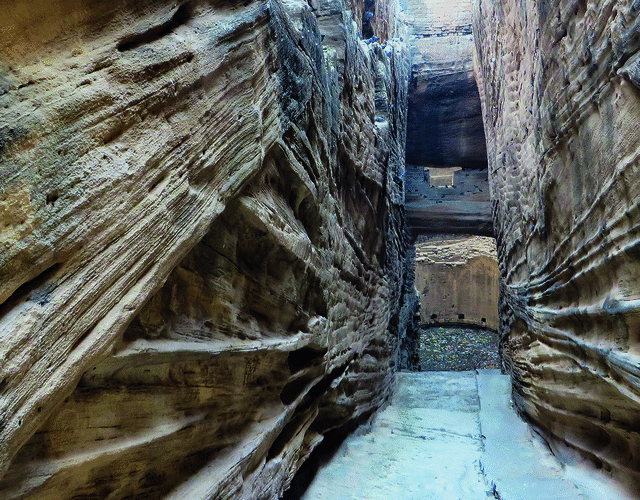
令人惊讶(不断消失)的印度梯井
The Astonishing (Vanishing) Stepwells of India
由专筑网缕夕,李韧编译
三十年前,在我第一次到访印度时,我见过一堵普通的墙。地面被一个精心制作的人造裂缝取代,我无法感受它的尺寸。这让人感到迷惑甚至迷失方向;毕竟我们都习惯了建筑的尺度感,而这里没有任何与之做对比的参照物体,我一直在寻找却无法发现什么端倪。从裂缝到地下空间更加让人晕眩,在这里,随着景物的变幻,人们的视野逐渐变得开阔,华丽高耸的列柱似乎要延伸至地球中央。在底部,地面上的噪音逐渐变弱,刺目的光线逐渐变暗,外面即使是烈日当空,在这里也能感受到习习凉风,就像进入了另一个世界。
Thirty years ago, on my first visit to India, I glanced over an ordinary wall. The ground fell away and was replaced by an elaborate, man-made chasm the length and depth of which I couldn’t fathom. It was disorienting and even transgressive; we are, after all, conditioned to look up at architecture, not down into it, and I had no clue as to what I was looking at. Descending into the subterranean space only augmented the disorientation, with telescoping views and ornate, towering columns that paraded five stories into the earth. At the bottom, above-ground noises became hushed, harsh light had dimmed, and the intense mid-day heat cooled considerably. It was like stepping into another world.

Image © Victoria Lautman
这是一个阶梯状的水井,世界上的水井种类很多,这种大规模的水井则主要集中在印度,大约公元前600年,它们是世界上第一批有效的采水系统,它们的用途虽然平凡,但却是杰出的建筑及工艺作品。然而,人们对于梯井的了解并不多,更多的是,成千上万的游客涌向印度的堡垒、宫殿、寺庙、陵墓,甚至对附近的奇迹闻所未闻,这些艺术作品就像低调的奇迹,常常距离我们只有一步之遥。
This was a stepwell – one of thousands that proliferated throughout the subcontinent, predominantly in India, beginning in around 600 C.E. They were first and foremost efficient water-harvesting systems, but that bland label doesn’t begin to describe how spectacular these structures are as marvels of architecture, engineering, and craftsmanship. Yet few people outside (and often within) the country have ever heard of stepwells, much less seen one, and millions of visitors flocking to India’s forts, palaces, temples, and tombs are completely oblivious to the wonders languishing nearby, often mere steps away and hiding in plain sight.
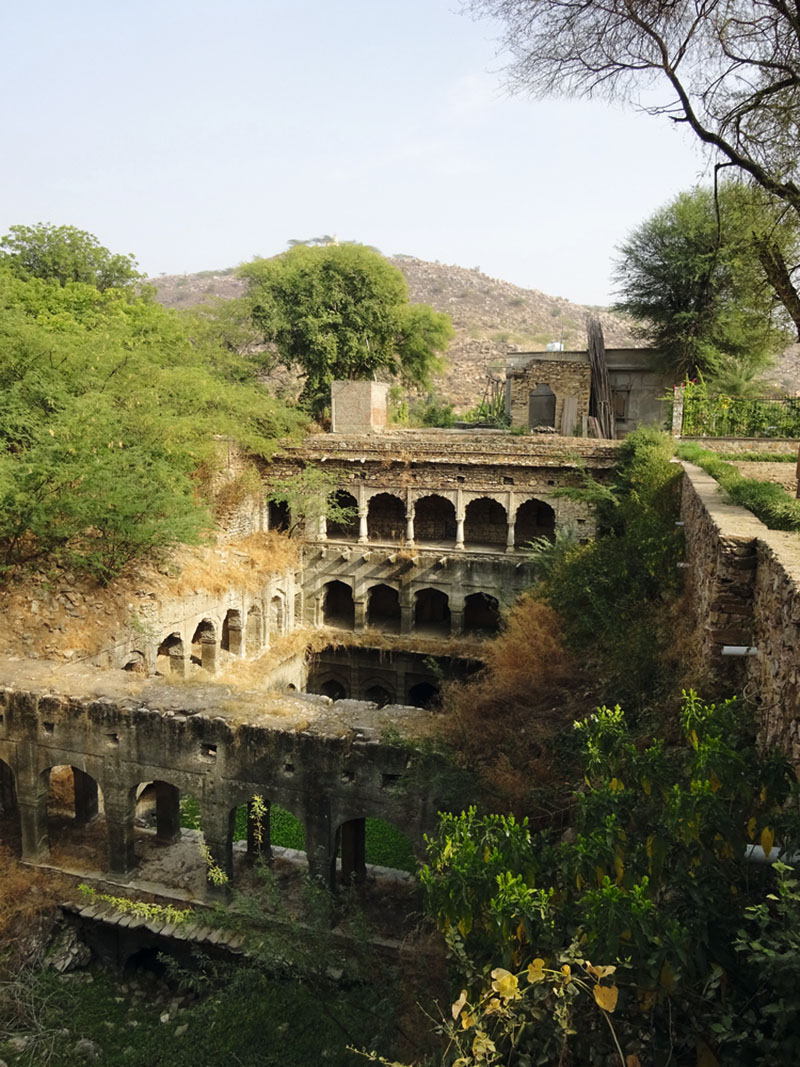
Image © Victoria Lautman
近一千五百年来,梯井也许是当地最重要的建筑作品,但它们目前的重要性无法保证它们能够很好地永久保存。其中一个位于Gujarat的梯井Rani ki Vav于 2014年被列入联合国教科文组织世界遗产名录。然而,大部分的梯井却没有如此幸运,它们是建筑中的濒危物种。
For nearly fifteen-hundred years, stepwells were perhaps the most significant structures in their communities, but their importance didn’t guarantee them a secure future. Only a relative handful have been preserved and carefully maintained, one of which—the incomparable Rani ki Vav in Gujarat—was designated a UNESCO World Heritage Site in 2014. Most, however, are in various states of decrepitude and today stepwells are an architectural endangered species.
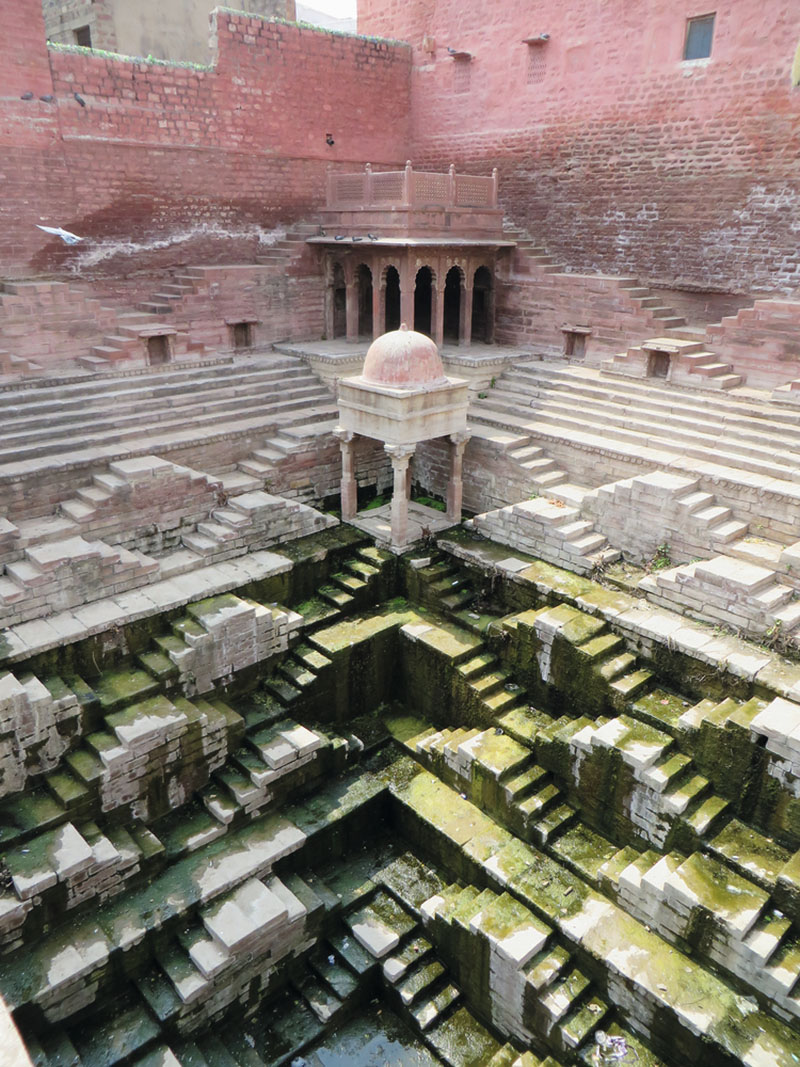
Image © Victoria Lautman
梯井的主要作用是为当地人民提供全年的饮用水,以及洗涤和灌溉用水,这些珍贵的资源来源于遥远的地下,这不是一个简单的壮举。在干旱季节,人们可以通过台阶来到地下,取走这些细细流淌的井水,而在印度季风期间,台阶(多达一百多级)会被逐渐升高的水位淹没。在这些时期,当人们望向梯井内部时,反而不会有过多的晕眩之感。(毫无疑问,这减轻了女性的负担,因为女性在日常弯腰取水时,还要努力平衡头顶的重物。)
The primary purpose of any stepwell was to provide water for drinking, washing, and irrigation year-round – no simple feat in regions where the precious resource might be buried nine-stories beneath ground. In dry seasons, flights of steps could reach the groundwater when it was a mere trickle, while during India’s dramatic monsoons, the steps (which could number well over a hundred) gradually submerged as the water level rose. At those times, the often-vertiginous descents were reduced. (Undoubtedly a relief for women fetching water daily while balancing vessels on their heads.)

Image © Victoria Lautman
但梯井(一般称为“baolis”、“baoris”,或“vavs”,取决于区域和语言),也有其他重要功能。例如,它们可能是活跃的印度教寺庙,或者重要的神殿,抑或仅仅是在炎炎夏日的荫凉的静修处。梯井对于当地社区来说是个聚集场所,特别是当地妇女的聚集地。在偏远的贸易路线上,梯井是至关重要的,这与今天的高速公路服务中心不同,旅行者可以在这里寻求避难。梯井具有如此重要的作用,因此,当地的统治者和有钱人也以此来炫耀他们的慷慨,捐修梯井是高调的慈善行为。据说,梯井的百分之二十五建设费用由妇女支付,用来纪念已故的丈夫或儿子。
But stepwells (generally known as “baolis”, “baoris”, or “vavs” depending on the region and language), served other essential functions. They could be active Hindu temples, for instance, or important shrines or, simply, shady retreats during scorching summers. Stepwells were gathering places for local communities, particularly for women who led otherwise constrained lives. On remote trade routes, stepwells were crucial—not unlike today’s highway rest-stops—whereupon travelers could seek refuge for days. Useful “tools” for local rulers and wealthy patrons to show off their munificence, stepwells were pricy acts of charity that demonstrated benevolence to the population at large. It’s believed that twenty-five percent of the structures were paid for by women in honor of deceased husbands or sons.
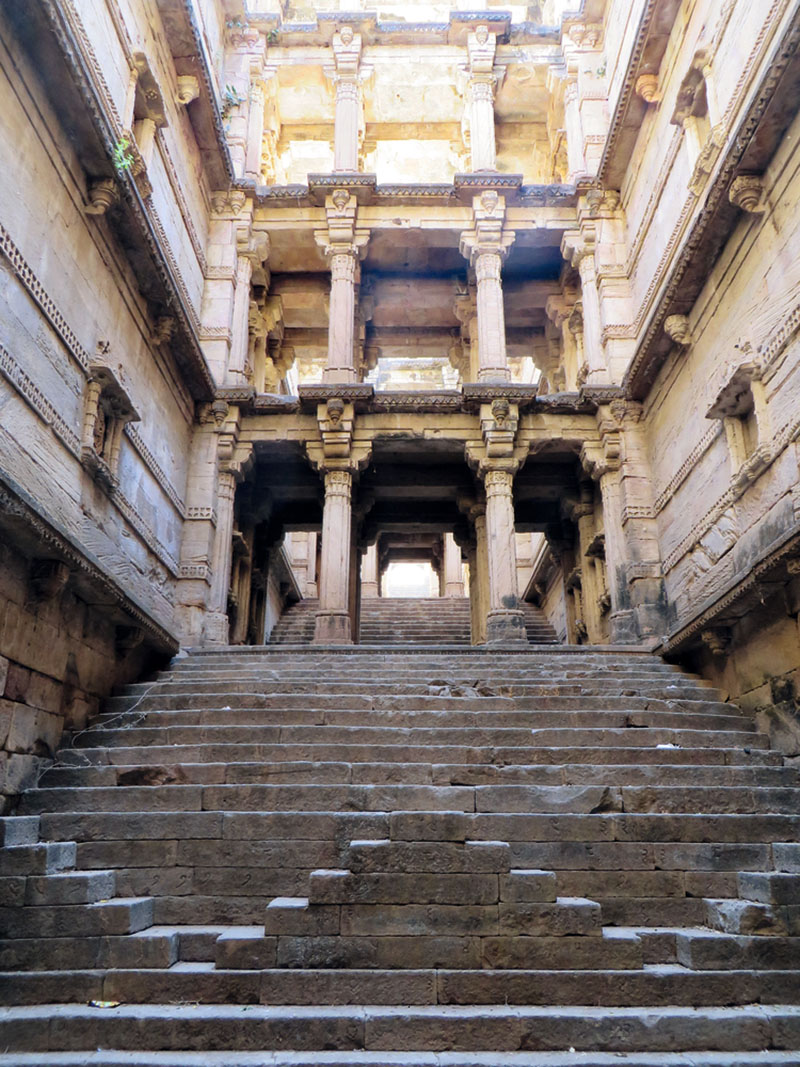
Image © Victoria Lautman
梯井的风格种类繁多,有线性、方形、L形或圆形,一般由砖石或瓦砾构成,每个梯井形态不一,或紧凑或庞大,或装饰繁多或形态简洁,就像指纹一样,不完全相同,但是关于每个梯井的信息都十分有限。三年前由学者Jutta Jain-Neubauer,Morna Livingston和Julia Hegewald撰写的三本关于梯井的开创性书籍现在已经绝版,市面上几乎无法看到,是甚至像日期和名称这样的基本信息都需要通过相关文献进行筛选。但是,一个事实无可争辩:梯井可以是十分惊人,也可以触动你的内心,但通常两者兼具。
The stylistic range of stepwells is mind-boggling: linear, square, L-shaped or round; constructed of masonry, brick, or rubble; intimately-scaled or downright enormous; encrusted with sculpture or minimal and modest. Like fingerprints, no two are exactly alike, but solid information about them is shockingly limited and wildly conflicting. Three seminal books on the topic, written years ago by scholars Jutta Jain-Neubauer, Morna Livingston, and Julia Hegewald, are now out of print and difficult to procure, but even boilerplate facts such as dates and names are debated in all relevant sources. One fact is indisputable: stepwells can be breathtaking, heartbreaking, but most often both.
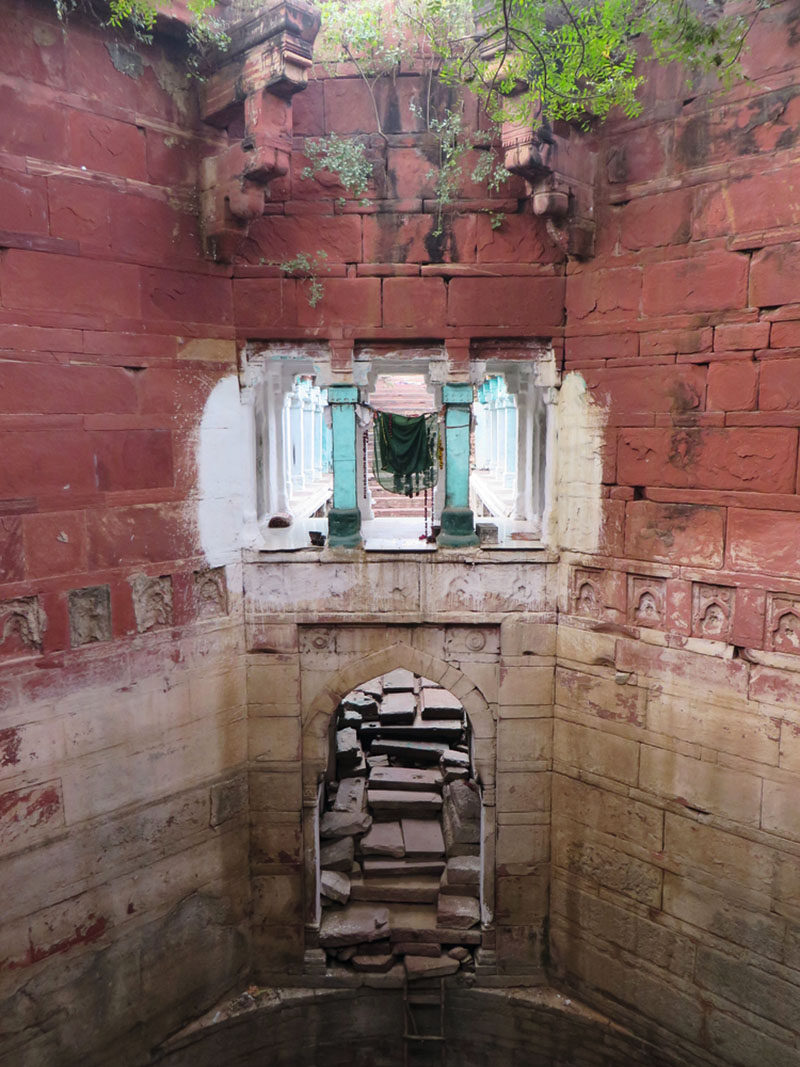
Image © Victoria Lautman
尽管它们在千年的发展中具有重要地位,但是在英国统治时期时,梯井却成为了肮脏的象征。许多人认为梯井已经不复存在,但人们也在猜测是否印度仍然还保存有一些梯井,如乡村水泵和管道等现代设施的出现让梯井的作用大不如前,设置绝大多数梯井的环境逐渐恶化,充满泥沙、植被和垃圾,而蝙蝠、蜜蜂、蛇等动物也居住于此。但无论怎么破旧,梯井仍然是传统的象征,每一个到访印度的游客都值得前去一看。
Despite their prominence for a millennium, stepwells lapsed into obscurity during the British Raj, when they were deemed intolerably unhygienic. Many are thought to have been destroyed, though just how many is anyone’s guess. The advent of modern amenities like village pumps and plumbing hastened their decline and, untethered from their original purpose, most stepwells deteriorated, filling with silt, vegetation, and garbage, while bats, bees, snakes, and other critters took up residence. But no matter how dilapidated, encountering a stepwell remains a powerful experience, and one that every visitor to Indiashould have.
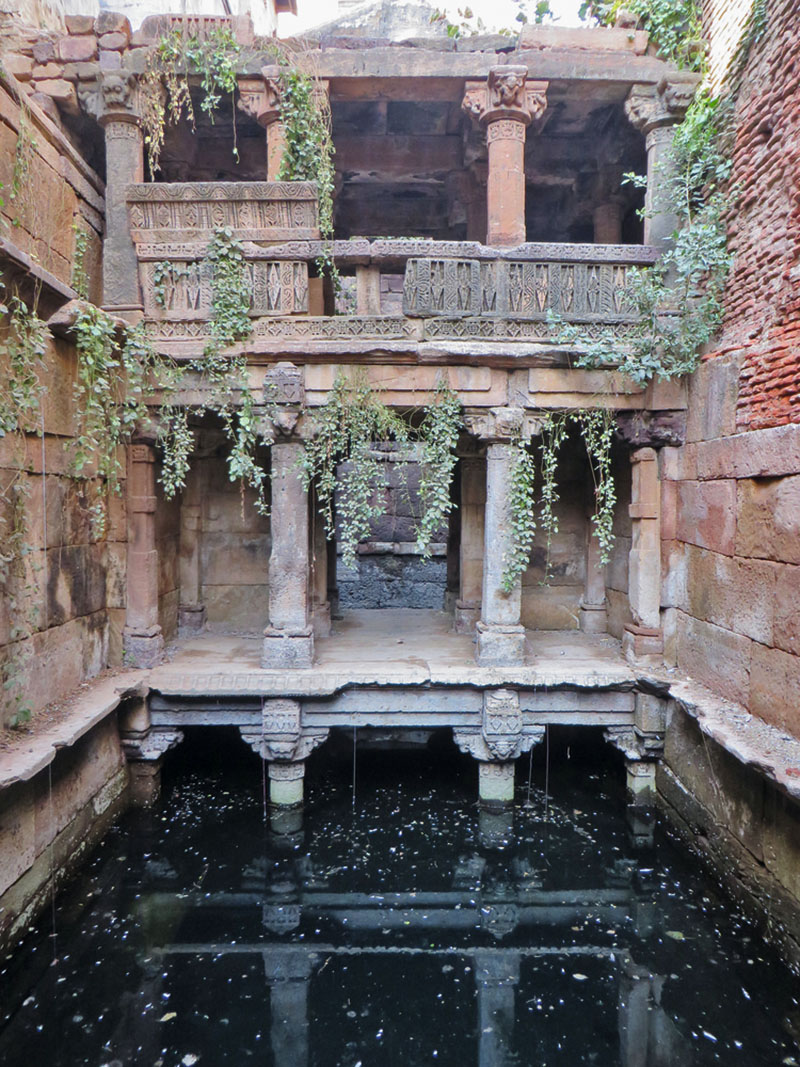
Image © Victoria Lautman
有的梯井易于被人们发现,有的则难以寻找,因为梯井是向地下发展的建筑,因为这不足为奇。通常情况下,梯井在地面的存在感是如此之低,人们几乎无法发现它。然而,更常见的是,梯井所在的社区并没有很多人流量,即使是当地人也不能完全了解梯井的具体地点。开车搜圈子、询问当地人、跟牧民和农民一起步行,这些都是目前寻找梯井的方法,这样也许会有一些搜寻成果。城市里的现代建筑越来越多,甚至只有通过打开窗户或爬上屋顶才能看到那些古老的建筑古迹。
Many are easily accessible, while others can be elusive, which is unsurprising considering their introverted nature. Often, a stepwell has so little above-ground presence as to be nearly undetectable. More often, however, they have so little currency in their community that even locals don’t know where to find them. Driving in circles, quizzing shopkeepers, walking along footpaths with herders and farmers – it’s all part of the hunt and can be alternately frustrating and rewarding. It’s no easier in cities, where modern construction has completely surrounded the ancient structures, which are only visible by leaning out windows or climbing onto rooftops.
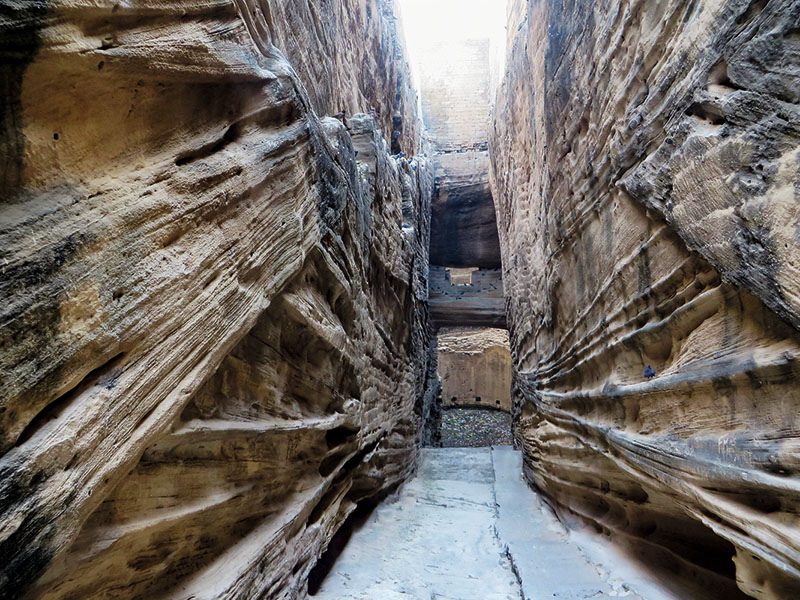
Image © Victoria Lautman
不管是否荒废,今天仍有很多梯井重现出一千年前的一些景象。有些是繁荣的寺庙,其他的则用于灌溉,还有一些则是喜欢洗澡和游泳的地方。最近印度政府和各类非政府组织一直在拯救濒危的文化遗产,这是一个好消息。社区已经开始清除各个梯井里的淤泥和泥石流,这已经是几代人第一次恢复水源。有的酒店甚至将梯井作为自己的广告来吸引远道而来的游客,人们甚至可以在这里进行烛光晚餐。
Derelict or not, there are plenty of stepwells today that soldier on, performing at least some of the same roles as a thousand years ago. Some are thriving temples, others are used for irrigation, while still others are favored spots for bathing and swimming. A recent groundswell of preservation efforts by the Indian government and assorted NGOs has been breathing new life into the moribund monuments, and the results are heartening. Communities have begun to clear their local stepwell of silt and debris, which has restored water for the first time in generations. And several hotels have lured curious tourists by advertising historic stepwells on their property – one even offers romantic dinners by candlelight.
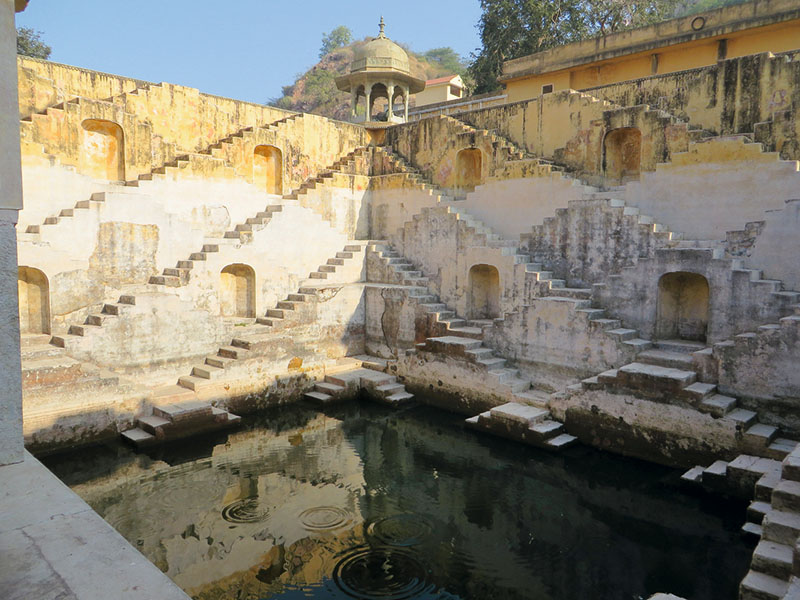
Image © Victoria Lautman
自从三十年前第一次来到这里,我对Stepwell(梯井)的印象不断加深,这让我多次来都印度,到目前为止我已经访问了大约两百个梯井,但这只是其中的一小部分。保存这些“地下美景”的唯一方法是提高人们的意识、创造需求,将其作为旅行景点,纳入旅游指南、大学课程、纪录片和其他书籍中。我们有义务为这里的历史文化传播贡献力量。
My own stepwell obsession has led me all over India since that first experience thirty years ago, and I’ve visited roughly two-hundred by now – but only a fraction of those remaining. The only way to ensure the future of these “subterranean ghosts” is to raise awareness, create demand, include them on every tourist itinerary, in every guidebook, in university courses, documentaries, and many more books. It’s up to us to spread the word.
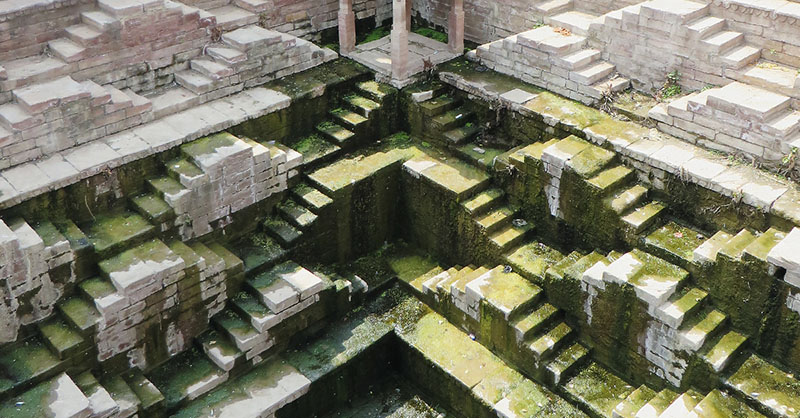
Image © Victoria Lautman
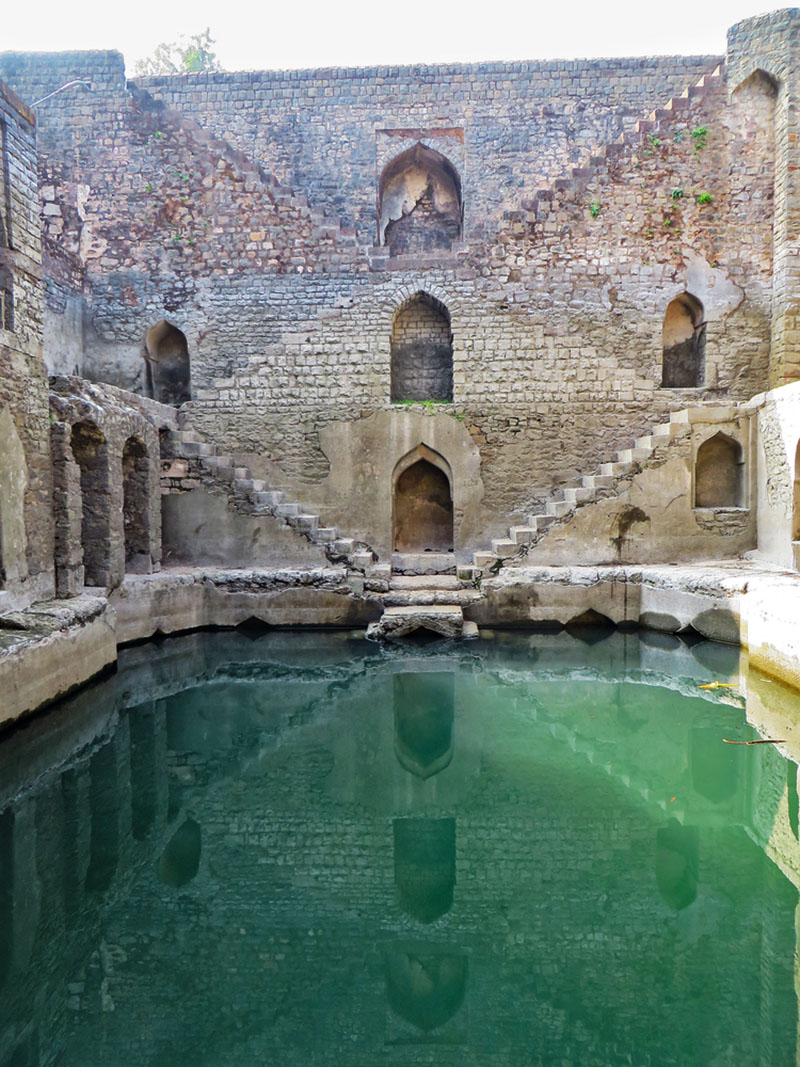
Image © Victoria Lautman
出处:本文译自www.archdaily.com/,转载请注明出处。
|
|
